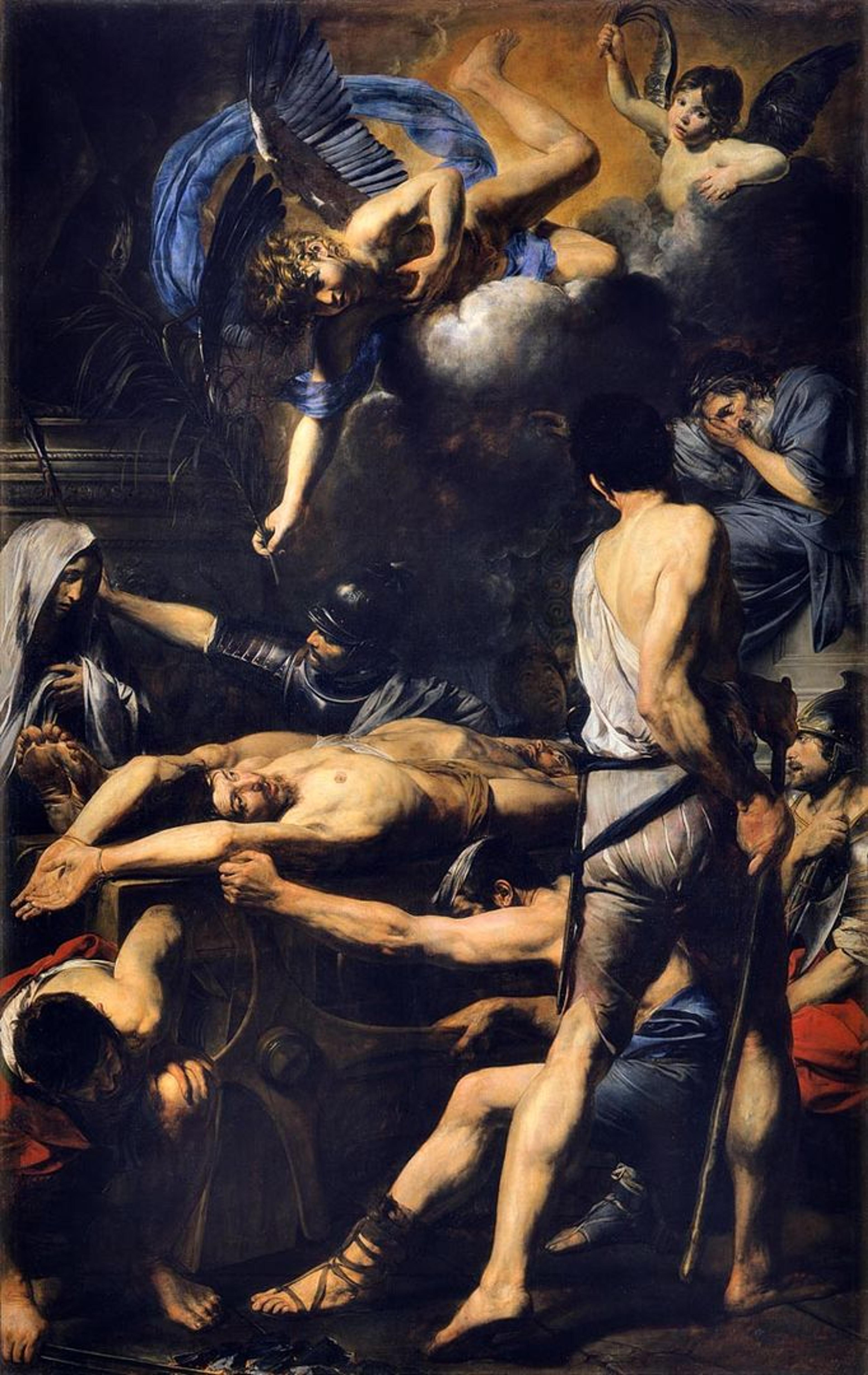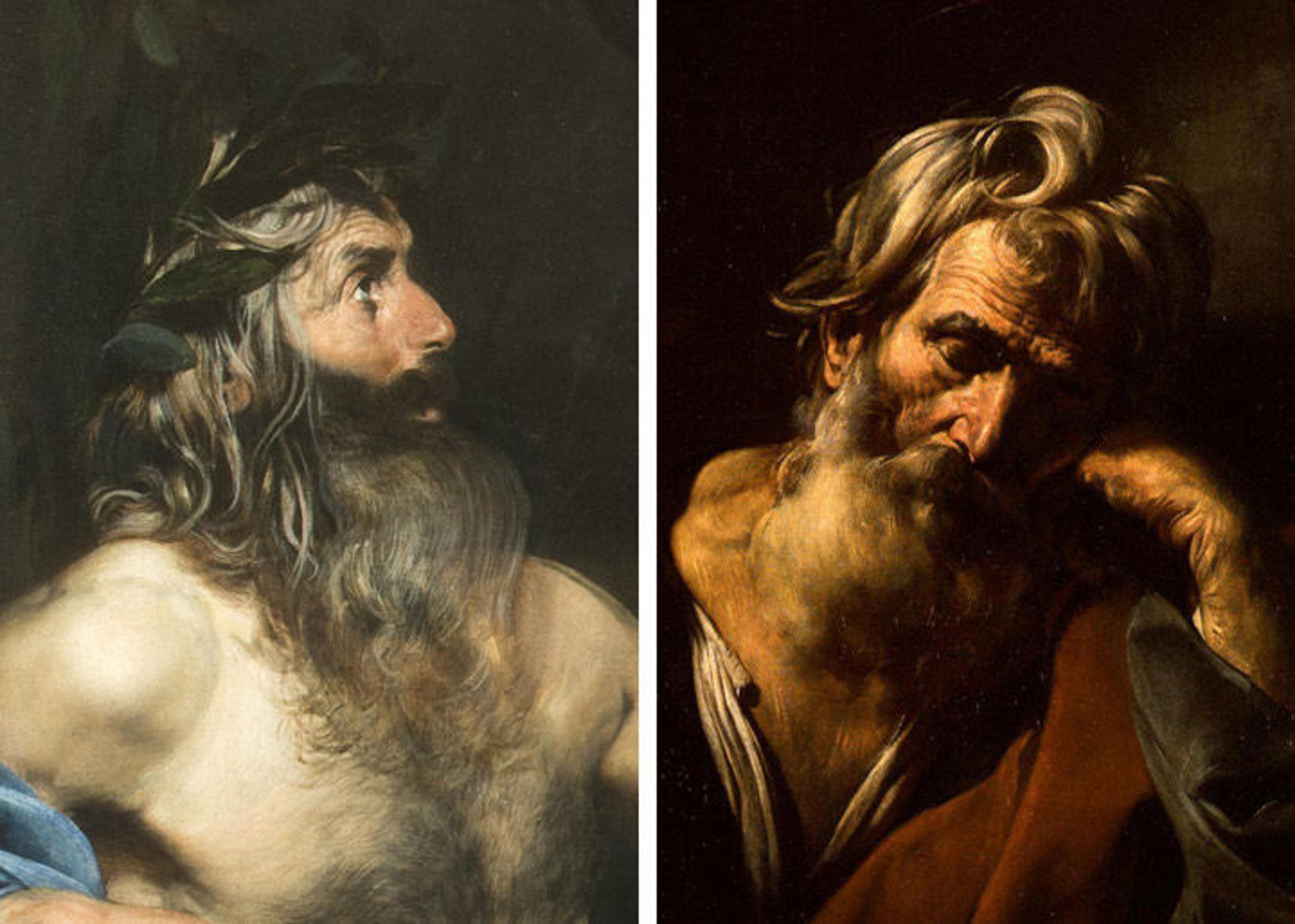
Valentin de Boulogne (French, 1591–1632). Martyrdom of Saint Processus and Saint Martinian, 1629–30. Oil on canvas. Pinacoteca, Vatican
«Modernity has never been easy to define. What seemed modern 100 years ago can seem like yesterday's news today. In the early 17th century—when the measure of greatness was the heroic style of Michelangelo's work in the Sistine Chapel—cutting-edge, in-your-face modernity was defined by a kind of raw realism, the defining artist of which was Caravaggio. He was accused, both figuratively and literally, of taking art into the cellar, of creating pictures of unrelenting darkness broken only by a shaft of light playing across ordinary figures you might meet in the streets of Rome. Scandalous!»
Valentin insisted on painting directly from models who posed in his studio, a practice we can recognize by the appearance of the same model in multiple paintings.

The same model posed as the River God of the Tiber (left) and as Saint Joseph (right); both works will be on view in Valentin de Boulogne: Beyond Caravaggio. Left: Valentin de Boulogne (French, 1591–1632). Allegory of Italy (detail), 1628–29. Oil on canvas. The Finnish Institute, Rome. Right: Valentin de Boulogne (French, 1591–1632). Dream of Joseph (detail), 1624–26. Oil on canvas. Private collection
Valentin aspired to put Caravaggio-esque realism on an equal footing with the art of the great Old Masters Raphael and Michelangelo. And that's just what he did in his spectacular altarpiece for Saint Peter's Basilica in the Vatican, as seen at the top of this post, which shows two Christian martyrs on the rack. Move over classical statuary—you look marble dead! When has an angel entered the scene so precipitously? And the marvelous Roman matron, her head so elegantly veiled? Stupendous.
No wonder the picture became the focus of heated debate when it was unveiled. Guess who was present at these discussions? Velázquez, who was on his first trip to Italy. (But that's the subject of another blog post altogether.)
How is it possible that there has never before been an exhibition devoted to this artist of such amazing stature? Valentin de Boulogne: Beyond Caravaggio, opening at The Met Fifth Avenue on October 7, will end this drought.
Related Links
Valentin de Boulogne: Beyond Caravaggio, on view at The Met Fifth Avenue from October 7, 2016, through January 16, 2017